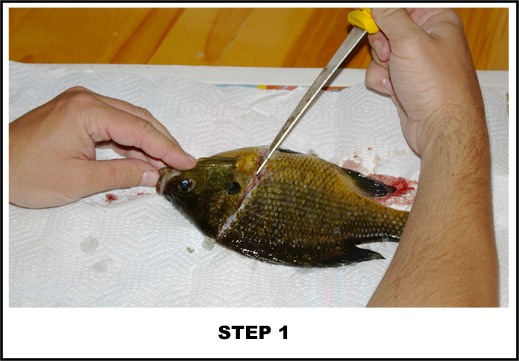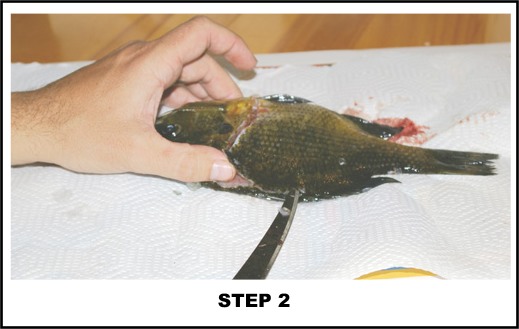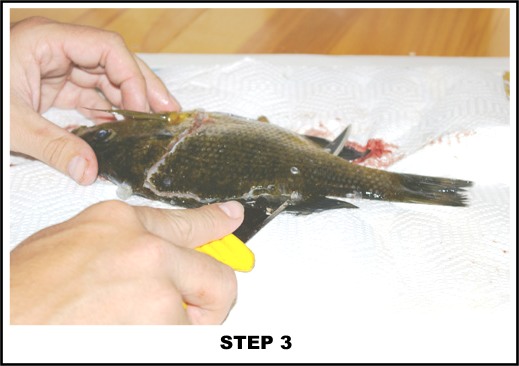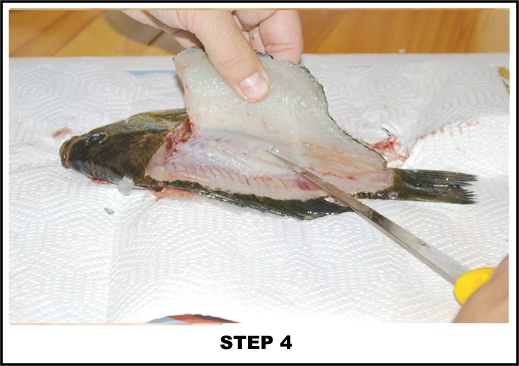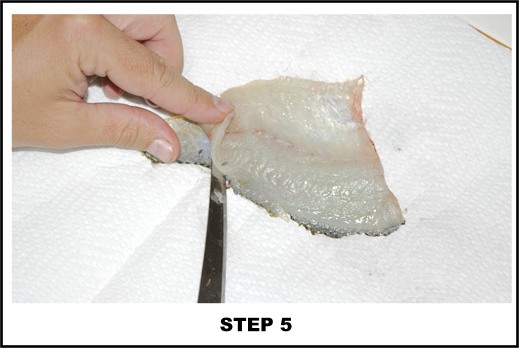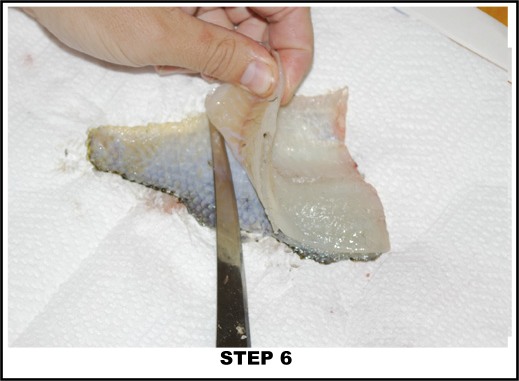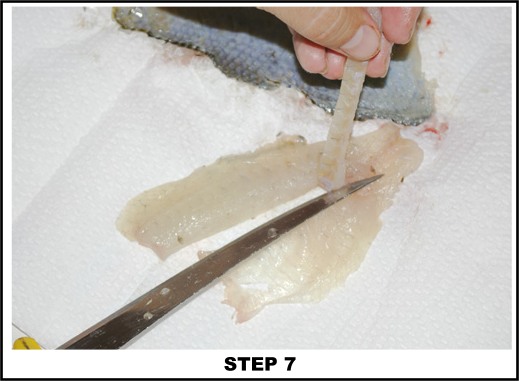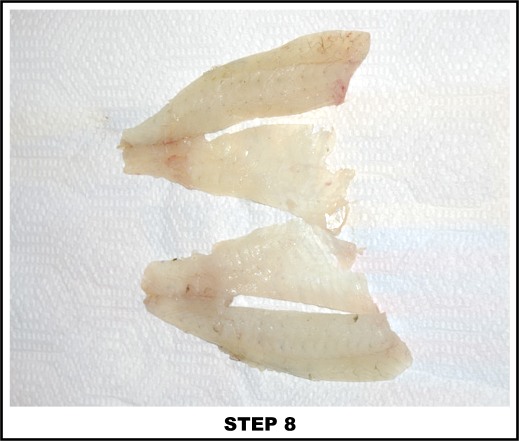Panfish
Filleting Made Easy We all know how succulent a mess of walleye or pike can be, and the filleting protocol that goes along with prepping them. It has become common practice to keep a few of these larger predators for a meal, but many anglers overlook the culinary treats that a panfish can provide. That's a shame, as panfish are prolific and easily caught, with high or non-existent limits. If truth were told, pannies are my number one choice when it comes to a plateful of fish. They may run small, but they pack a big punch in the taste department. For the most part, panfish can be prepared like a walleye. Their small size dictates that the best tool for the job is a thin and flexible knife - one that can be worked with precision and accuracy. A six-inch blade would be your best bet. Panfish will take more cutting time than a walleye, but the thin and tasty flesh is well worth the extra effort in the kitchen. The following images showcase a bluegill, yet perch, crappie, pumpkinseeds and rock bass are all done in an identical way. All in takes is a bit of practice, and you too can appreciate the flavours and aroma that an ultralight rod can provide. Step 1.
Step 2.
Step 3.
Step 4.
Step 5 and 6.
Step 7. With your finger, rub along the middle area of the fillet. You will notice a row of bones that start at the head end and run approximately three-quarters of the way down. With the knife point, make an incision on the left and right hand side of these bones, and cut cleanly through the length of the fillet. You can then cut this thin strip of flesh and bones away.
Step 8.
When storing your fillets, place in thick freezer bags and completely cover the meat with water prior to freezing. This technique will eliminate freezer burn, and keep your fillets fresh and tasty. Fillets can last upwards of six months or more when prepared this way. Take some time this season to
experience the taste of pannies. I can guarantee you'll be hooked the
first time you take a bite!
|


